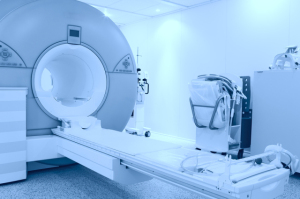by
Lauren Dubinsky, Senior Reporter | August 28, 2015
To some degree, ADHD may persist into adulthood even when the current diagnostic criteria do not indicate it, according to a new study published in the journal European Child Adolescent Psychiatry.
Researchers at the University of Cambridge and University of Oulu used functional MRI (fMRI) to examine the brains of young adults who had ADHD as adolescents.
Some believe that children may outgrow ADHD as their brain develops in adulthood, but research suggests that 10 to 15 percent of children still have ADHD in adulthood. Most of the research that tracked children with ADHD into adulthood used interview-based assessments, which don't reveal differences in brain structure and function.



Ad Statistics
Times Displayed: 173508
Times Visited: 3165 For those who need to move fast and expand clinical capabilities -- and would love new equipment -- the uCT 550 Advance offers a new fully configured 80-slice CT in up to 2 weeks with routine maintenance and parts and Software Upgrades for Life™ included.
But the researchers had many questions regarding that, so they turned to MR and fMRI to get answers. They evaluated MR scans showing the brain structure and memory function of 49 young adults between ages 20 and 24 who were diagnosed with ADHD at age 16, and compared it with MR scans of a control group of 34 young adults.
They found that the group diagnosed with ADHD in adolescence had reduced brain volume and poorer memory function, whether or not they still met the diagnostic checklist criteria for ADHD. More specifically, they uncovered that they had reduced grey matter in the caudate nucleus, which is a key brain region that integrates information across different parts of the brain and supports cognitive functions such as memory.
To determine if the grey matter deficits were of any significance, the researchers performed an fMRI experiment that measured brain activity, while 21 of the previous diagnosed ADHD individuals and 23 of the controls took a test inside the scanner that evaluated their memory.
One third of the previously diagnosed patients failed the test, but less than one in 20 of the controls failed it. If their level of accuracy was less than 75 percent, it was considered a fail.
In the control group, when the memory questions became more challenging, the caudate nucleus became more active, which appeared to help them perform better. But in the ADHD group, the caudate nucleus maintained the same level of activity throughout the test.
Additionally, there were no differences in brain structure or memory test scores between the young adults who were previously diagnosed with ADHD and still met the diagnostic criteria and those who no longer met them.
Someone is considered to be recovered from ADHD when they no longer meet the symptom checklist criteria for diagnosis, but this research shows that objective measures of brain structure and function might still be abnormal even if diagnostic criteria are no longer met.
Going forward, the researchers are planning on investigating whether these differences in brain structure and memory function are connected to difficulties in everyday life, and to determine response to treatment.

